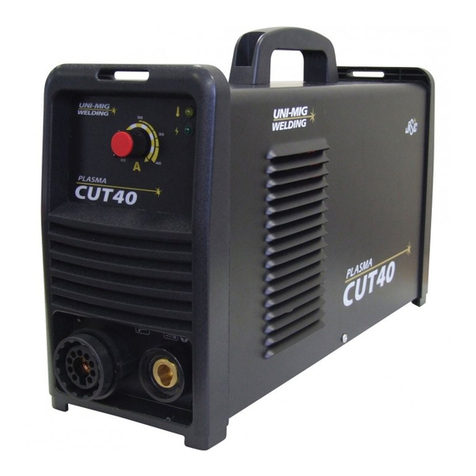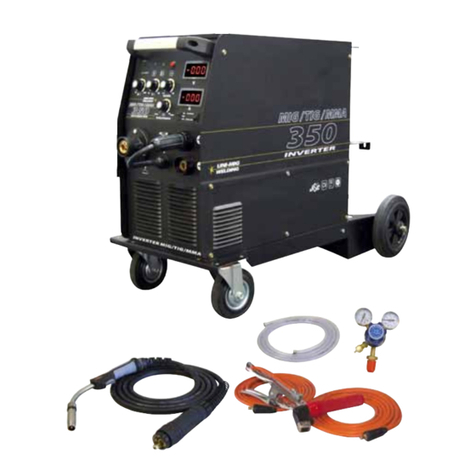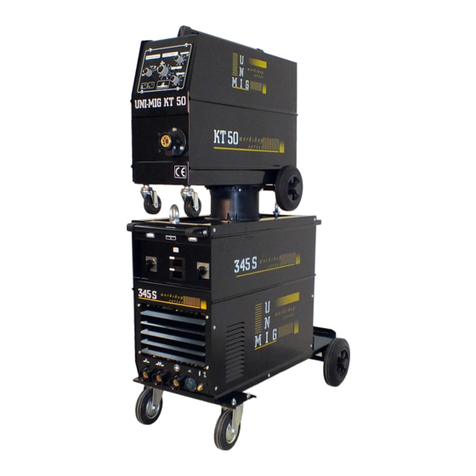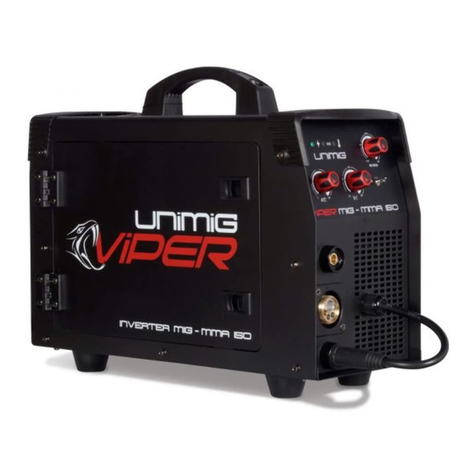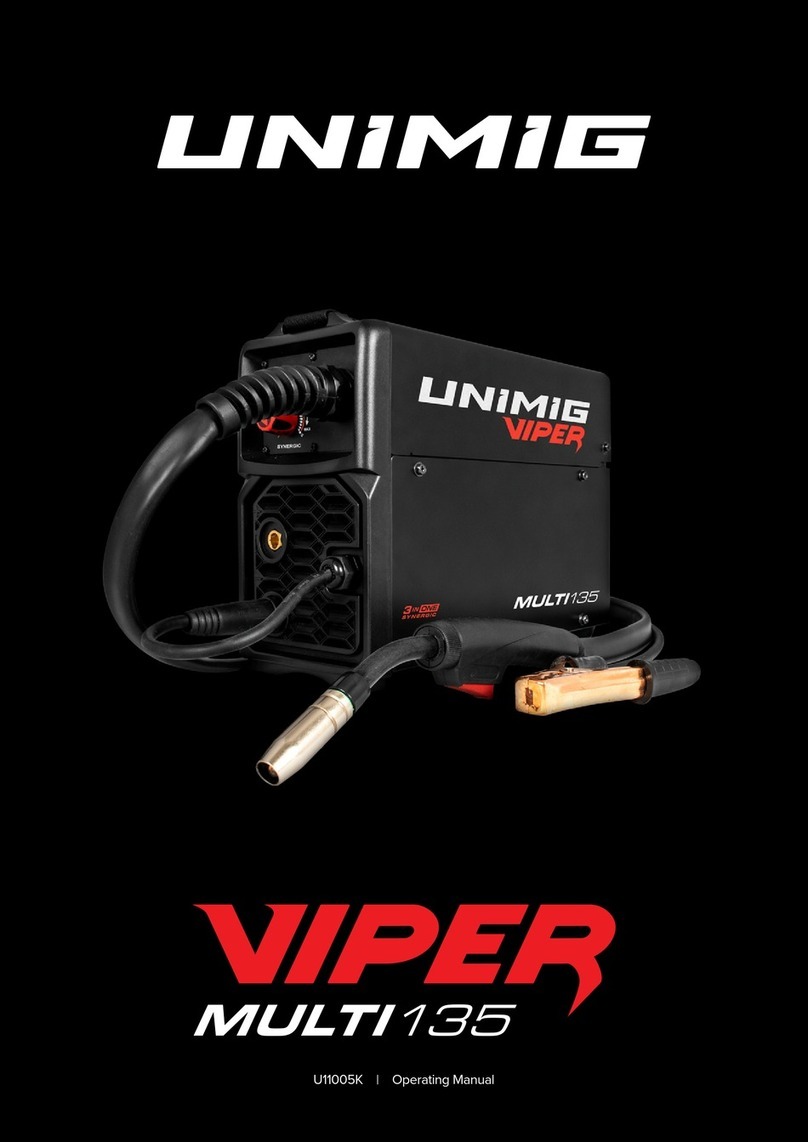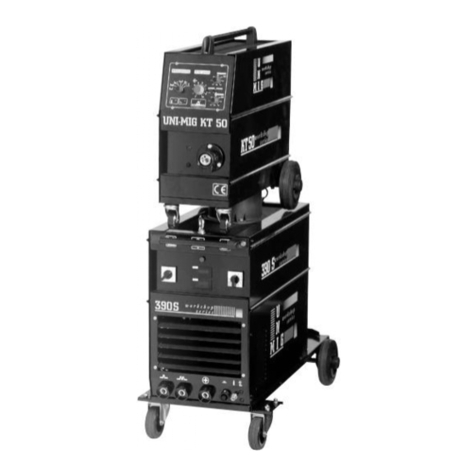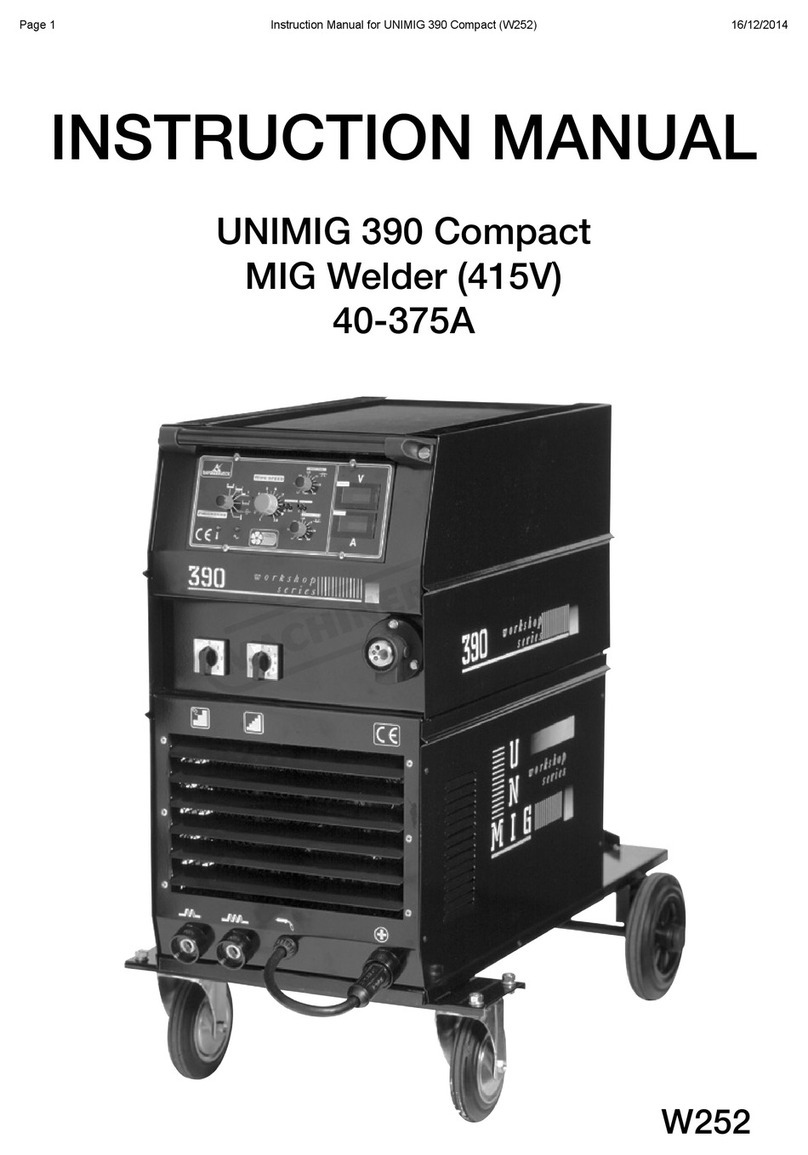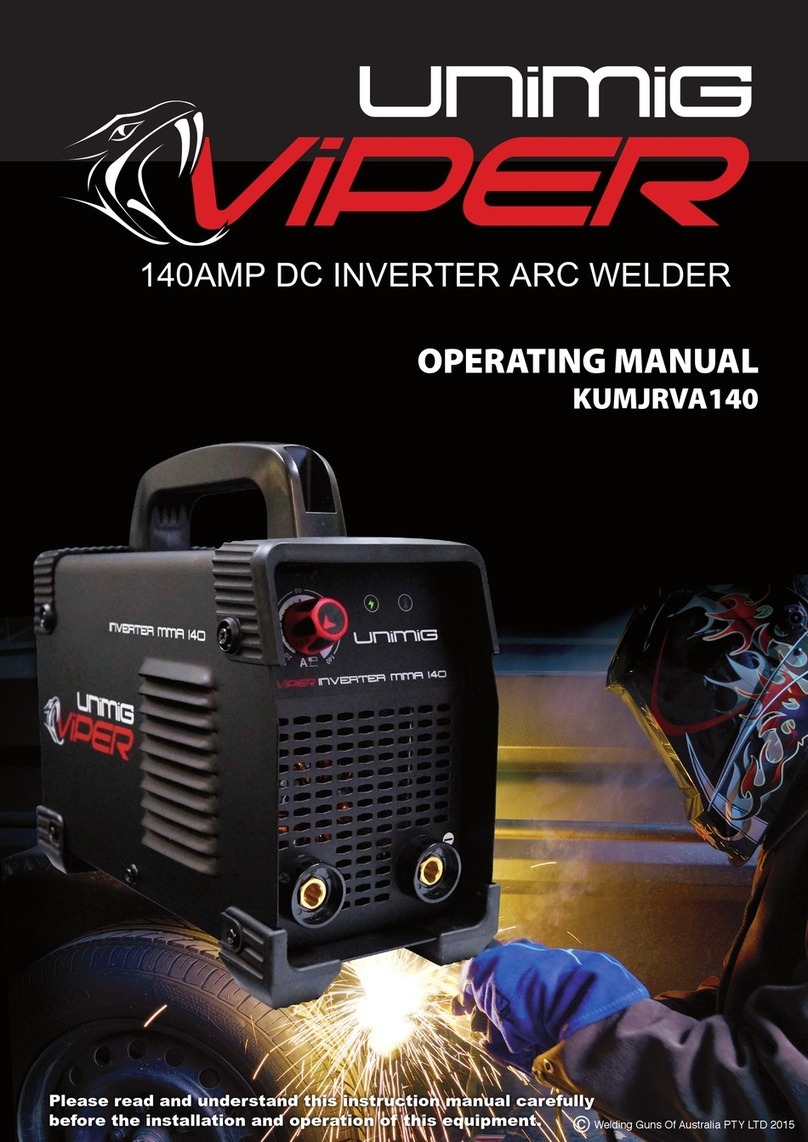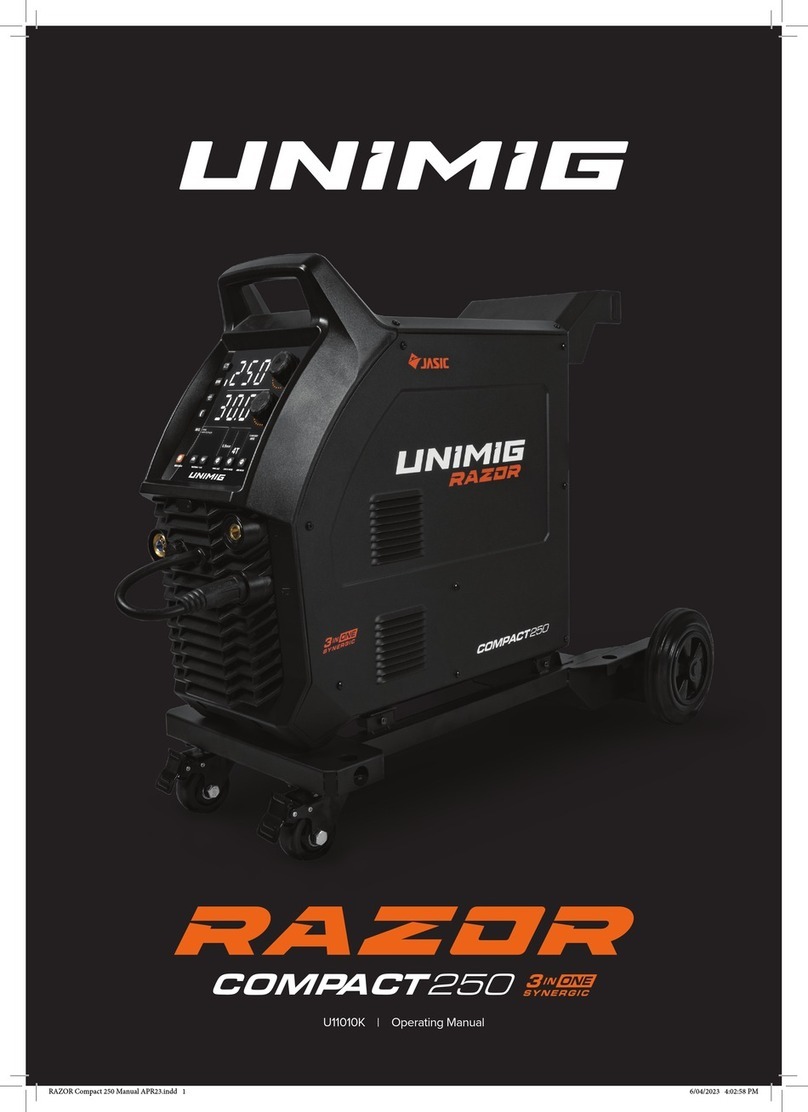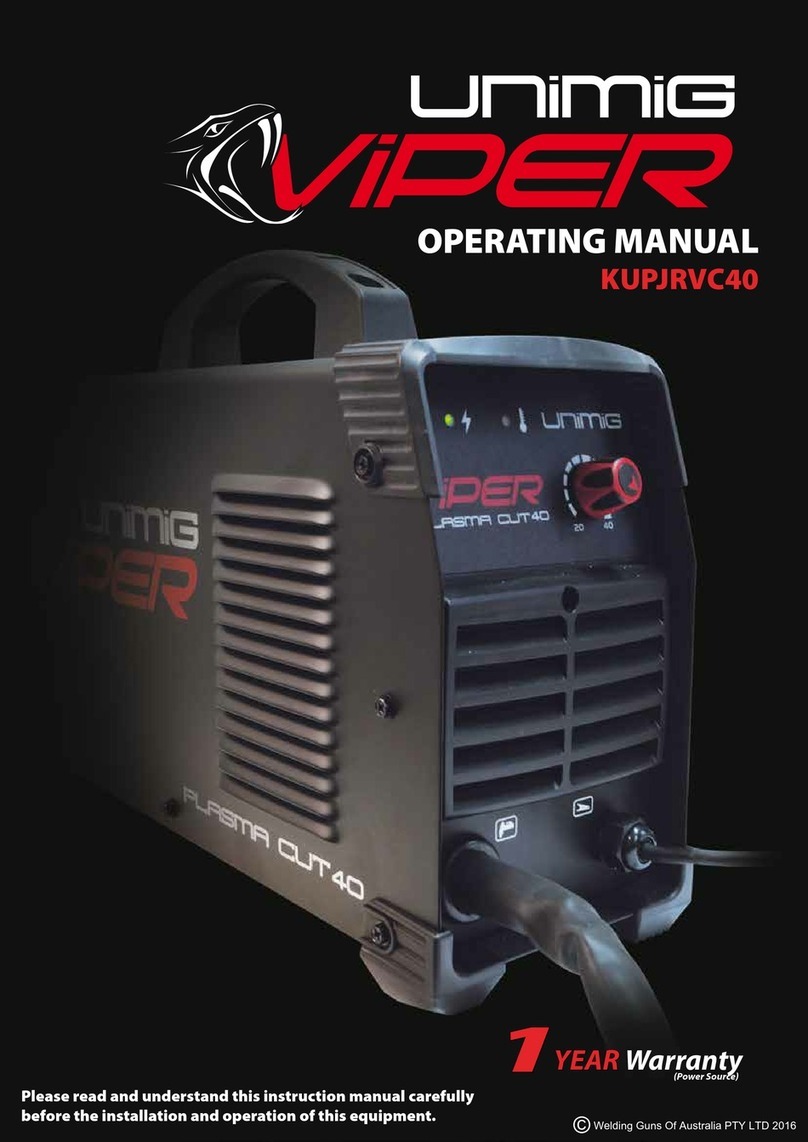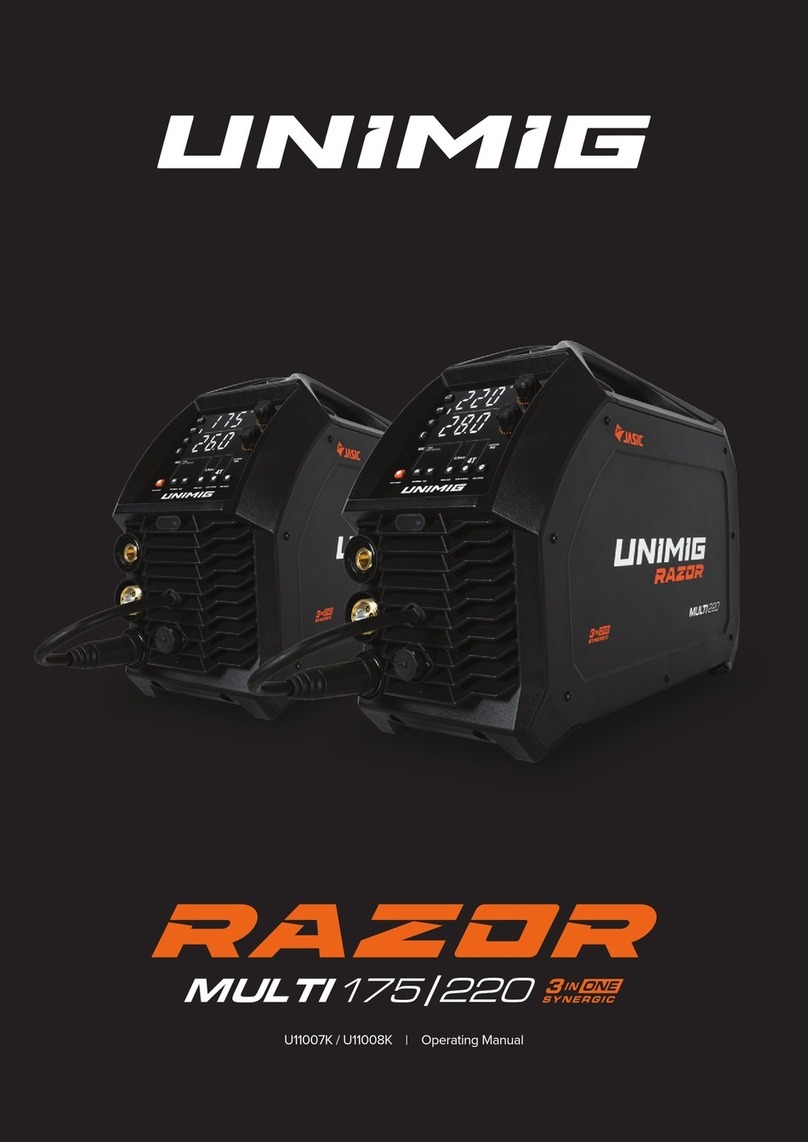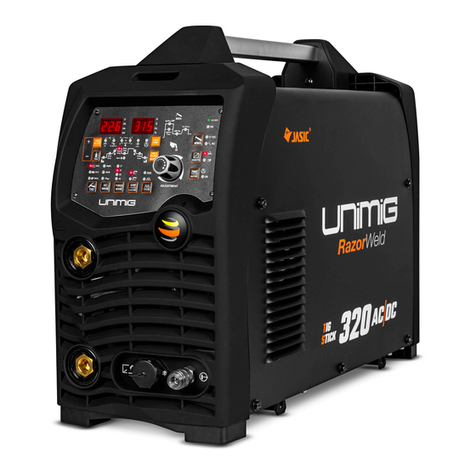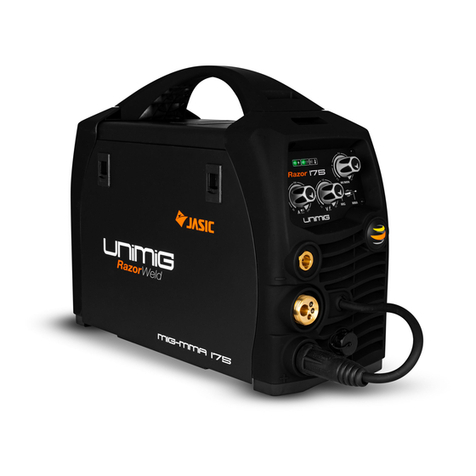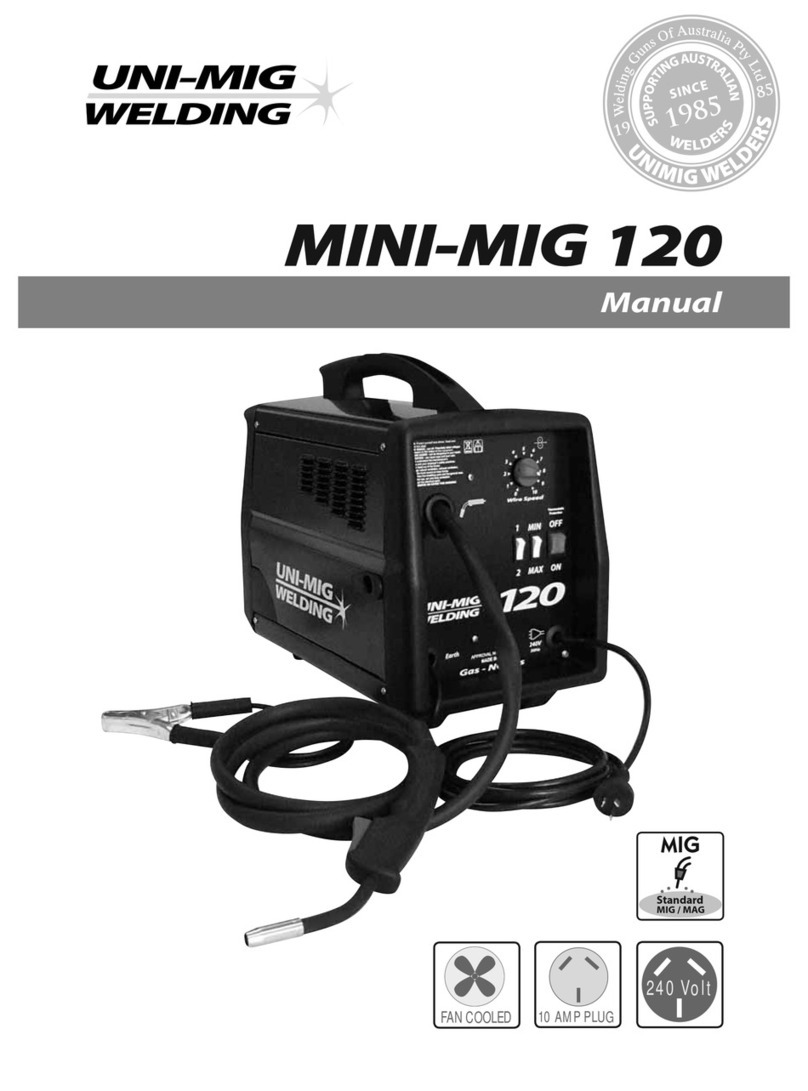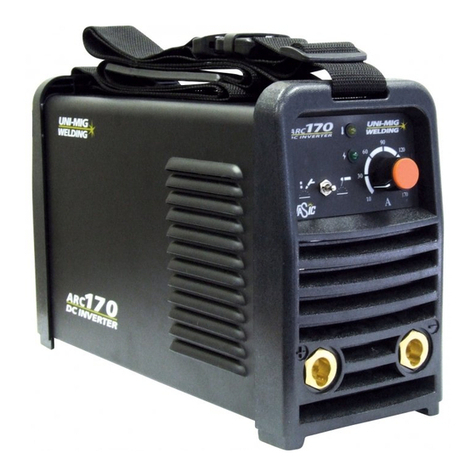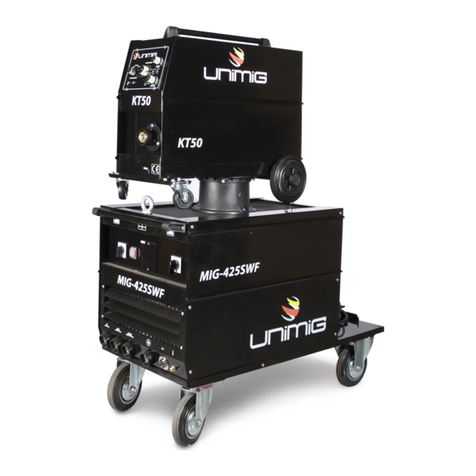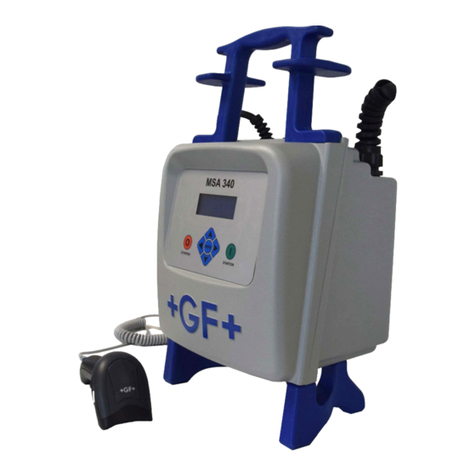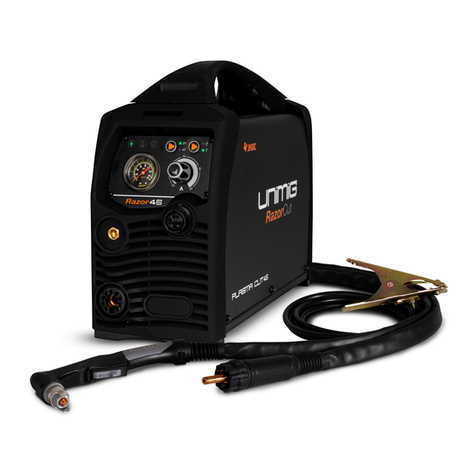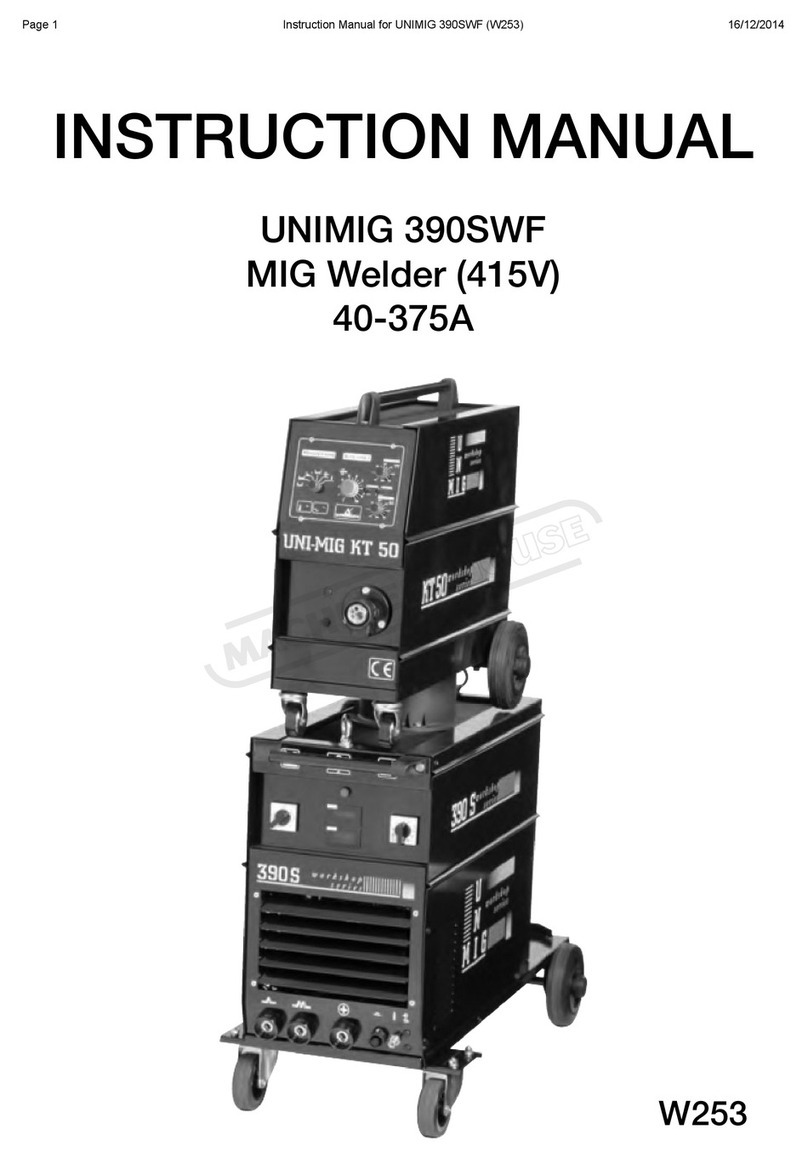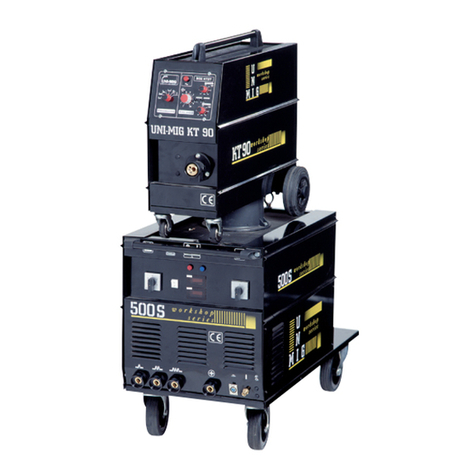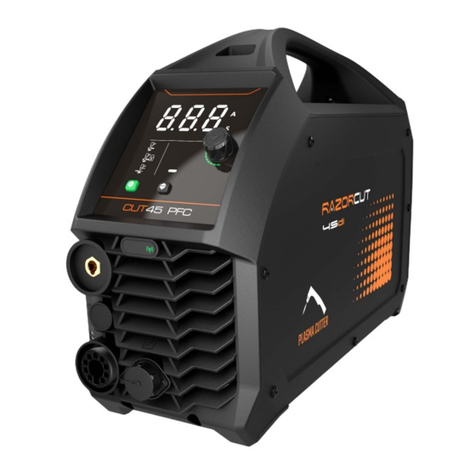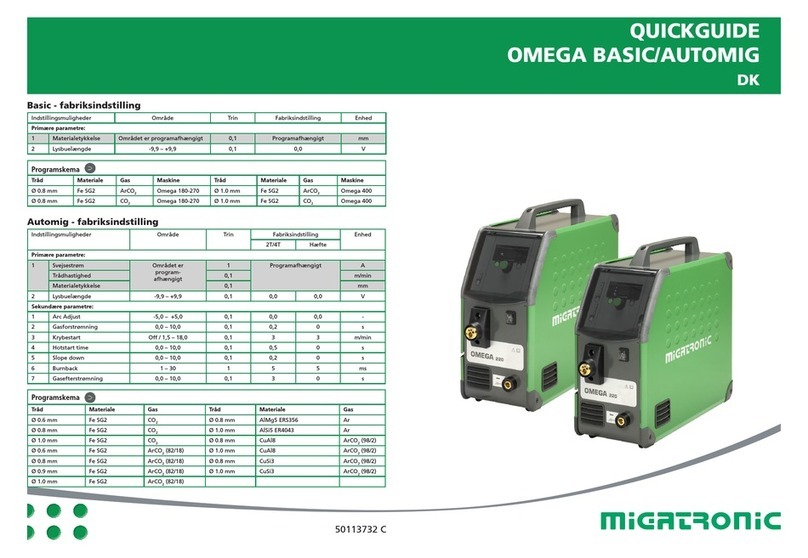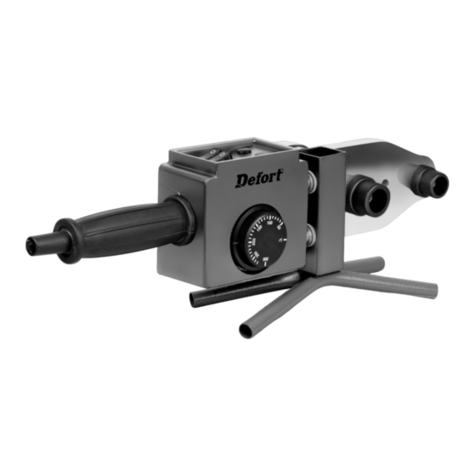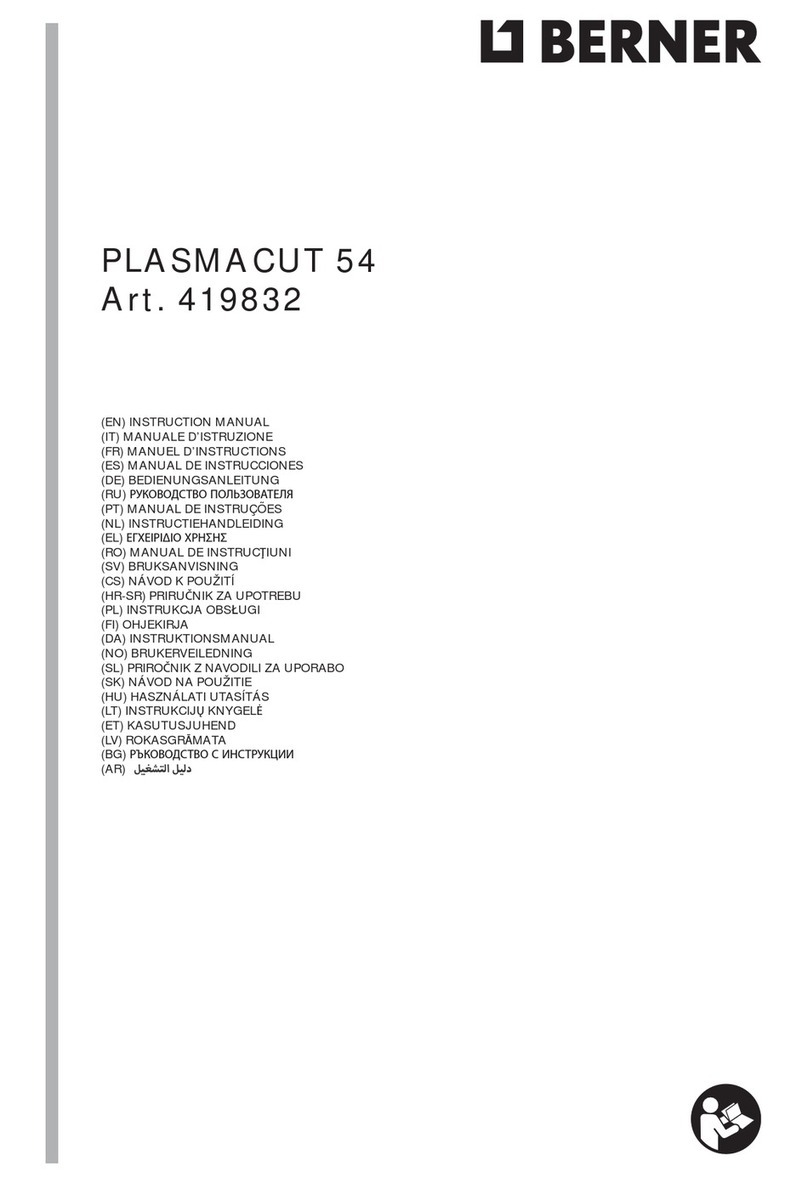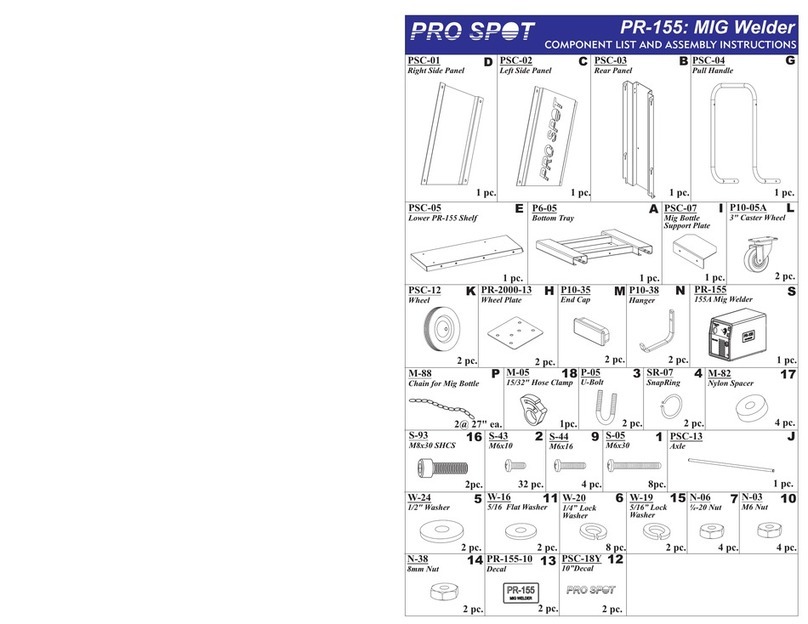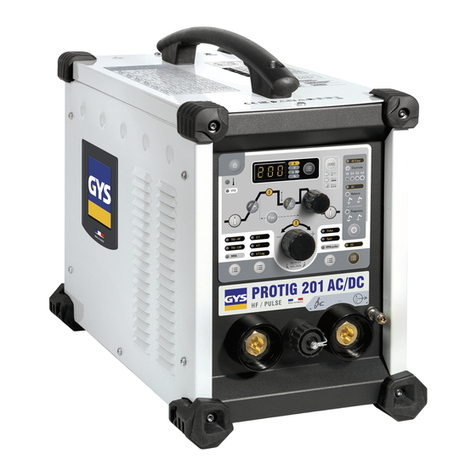
8
MIG/TIG/MMA DC Welding Machines
Separate Wire Feeder System
Welds: Steels, Stainless, Cast Iron, Bronze, Aluminium, Copper
The MIG Separate Wire Feeder range are inverter-based MIG welding machines with added MMA and TIG function. These are
industrial machine equiped with a separate 4 roll gear driven wire feeder and 10m interconnecting cables. The MIG function allows you
to weld with Solid wires, Fluxcored Gas and Gasless wires. Adjustment of Voltage & Wire Feed at the wire feeder make for easy set-
ting of welding parameters and give the convenience of remote adjustment from the power source. The Crater Current setting delivers
perfect nishing of the weld, the electronic inductance offers ne adjustment of the arc characteristic and burn back adjustment leaves
the wire stick out ready for the next weld. Wire inch and Gas Check provides set up of the wire feed and gas setting with wastage of
wire or gas. Added MMA welding capability delivers easy and high quality welding using electrodes, including cast Iron, stainless and
low hydrogen. Connection of the 17V or 26V TIG torch provides quality DC TIG (scratch start) welding of steel, stainless steel and
copper. Ideal for heavy and structural welding applications through to general engineers, maintenance workshops, light engineering,
rural workshops and home workshops. Designed and built to our specication. Certied to - AS/NZ60974.1
Overview
Features
• Latest IGBT Inverter Technology
• MIG/Mag with Gas and Gasless wire function
• Stick Electrode (MMA) Function
• DC TIG welding with scratch start
• Voltage & Wire Feed Controls at Wire Feeder
• Variable Inductance & Burn Back Controls
• Adjustable Crater Current Control
• Gas Check / Inch Wire
• 2T/4T Trigger Function
• Separate 4 Roll Geared Wire Feeder
• LED Digital Display
• Euro MIG torch connection
• 10m Interconnecting Cables
• Excellent arc stability for MIG/TIG/MMA welding
Technical Data MIG500SWF MIG350SWF MIG250SWF
Power Supply / Phases (V-Ph) AC415V±15%~50/60Hz 415V 3 Phase 240V 1 Phase
Duty Cycle@40°c to AS/NZ60974 60% @ 500 Amps MIG 60% @ 350 Amps MIG 35% @ 250Amps MIG
60% @ 500 Amps MMA 60% @ 350 Amps MIG 35% @ 225Amps MMA
Output Current Range MIG 50A/16.5V - 500A/39.0V 50A/16.5V - 350A/31.5V 30A/15.5V - 250/26.5V
Output Current Range MMA 20A/20.8V - 500A/40.0V 20A/20.8V - 350A/34.0V 10A/20.4V - 250/30.0V
Rated Power MIG 24.7 KVA 11.9 KVA 10.8 KVA
I Max MIG 34.0 Amps 31.0 Amps 45.0 Amps
MMA 35.0 Amps 34.0 Amps 51.0 Amps
I
i
eff MIG 26.0 Amps 24.0 Amps 26.6 Amps
MMA 27.0Amps 26.0Amps 28.0 Amps
Wire Feeder Type Gear Driven 4 Roll Gear Driven 4 Roll Gear Driven 4 Roll
Protection Class IP 21S IP 21S IP 21S
Insulation Class F F F
Dimensions Power Source (LxWxH) 595x280x440mm 595x280x440mm 595x280x440mm
Weight Power Source 40.6 Kg 38 Kg 38 Kg
Dimensions Wire Feeder (LxWxH) 630x235x420mm 630x235x420mm 630x235x420mm
Weight Wire Feeder 14 Kg 14 Kg 14 Kg
Length of Interconnecting Cable 10 m 10 m 10 m
Warranty 3 years on machine 3 years on machine 3 years on machine
KUMJR250/350/500SWF
MACHINE PACKAGE: KUMJR250SWF
UNI-MIG 250SWF Multifunction Welding Inverter / SB24 4M Sure Grip MIG torch with Euro connector, 10M ARC lead set
35-50mm Dinse style connections / UNI-FLAME Twin Gauge Argon Regulator 2M Gas Hose Complete with fittings,
10M Inter connection Cables, Trolley.
MACHINE PACKAGE: KUMJR350SWF
UNI-MIG 350SWF Multifunction Welding Inverter / SB36 4M Sure Grip MIG torch with Euro connector, 10M ARC lead set
35-50mm Dinse style connections / UNI-FLAME Twin Gauge Argon Regulator 2M Gas Hose Complete with fittings,
10M Inter connection Cables, Trolley.
MACHINE PACKAGE: KUMJR500SWF
UNI-MIG 500SWF Multifunction Welding Inverter / TWC5-15FTE Sure Grip MIG torch with Euro connector, 10 ARC lead set
35-50mm Dinse style connections / UNI-FLAME Twin Gauge Argon Regulator 2M Gas Hose Complete with fittings,
10M Inter connection Cables, Trolley.

